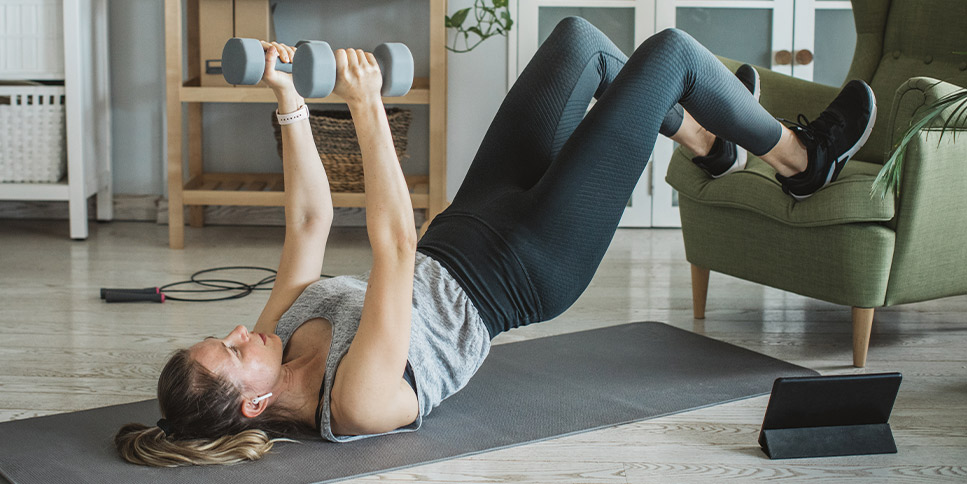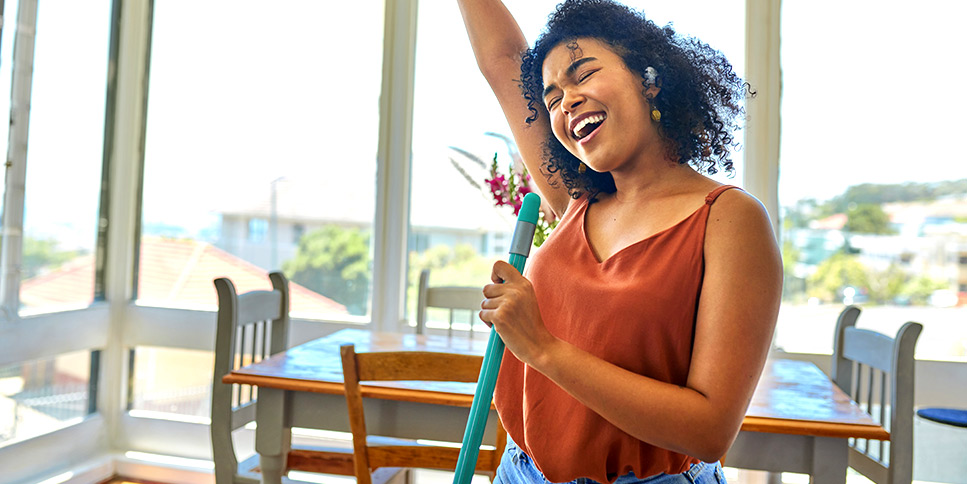Throughout history, women and men have always been under some sort of pressure to look a certain way. Now, with the rise in body positivity and body neutrality movements, society seems to finally be shifting away from glorifying an ‘ideal’ body type for women and men.
While there’s obviously still a lot of work that needs to be done, the good news is that we’re starting to see more and more people who feel confident in their own skin, appreciate their body in spite of its flaws, and, most importantly of all, love themselves for who they are regardless of their body’s shape and size.
So, if you’re considering making improvements to your body, it’s important to ask yourself whether you’re planning on making these body improvements for health reasons or whether you’re feeling societal pressure to do so.
Why does this matter? Body confidence, while it can mean different things to different people, should ultimately be about challenging yourself to accept and love who you are today – exactly as you are, instead of feeling like you need to be ‘perfect.’
Therefore, your goal should be self-acceptance and self-love first, and then improvement. Since having a healthy body image plays a role in how you feel about your appearance and even how you judge your self-worth, one of the goals of body positivity is to address some of the ways that body image influences mental-health and well-being.
So, if you’re planning on making any body improvements, such as reducing hip fat, make sure that you’re truly doing it for you, and not for anyone else.
That said, if you are planning on reducing hip fat, here are some healthy ways to do it, as well as an explanation as to why fat collects in the hip area.
Why Fat Collects In The Hip Area
For starters, both women and men need to maintain a certain percentage of essential fat in order to function normally. On average, women have 6% to 11% more body fat than men because women’s bodies need to be able to care for a growing baby, and the fat reserves help a mother do just that.
Women store fat differently than men, as well. While fat distribution varies between people, and genetics most likely dictates where most of your fat accumulates, women usually store fat in their hips, thighs, butt, and/or belly, while men tend to store excess fat in their upper body, especially in the abdominal region.
Research also shows that women have more subcutaneous fat than men. Subcutaneous fat is a type of fat that deposits underneath the skin and is partially responsible for women’s curves. Known as the ‘jiggly fat’ that’s visible just under the skin, subcutaneous fat is normally harmless and may even protect against some diseases.
Then there’s visceral fat, which is a fat that surrounds the organs. While visceral fat isn’t visible from the outside, it’s associated with a number of diseases. Studies show that men have a higher tendency to accumulate abdominal visceral fat compared to pre-menopausal women.
Can You Change Where Your Body Stores Fat?
If you’re wondering, can you change where your body stores fat? The answer is, No. Too many factors, such as your bone structure, body type, age, hormones, and sex, determine where you’ll store fat in your body.
For instance, the drop in estrogen that occurs during perimenopause and menopause can cause stubborn fat on the hips, abdomen, and butt. That’s because as a woman’s body comes to the end of its child-bearing years, it redistributes the fat stores to the midsection.
3 Of The Best Ways To Reduce Hip Fat
If you’d like to accentuate your curves and tone the muscles around your hips, you can reduce hip fat by losing overall body fat.
While everyone has some subcutaneous fat, genetics and lifestyle factors, such as diet and exercise, affect the amount of subcutaneous fat each person develops. People are more likely to accumulate both visceral and subcutaneous fat when they are sedentary, get little or no aerobic exercise, have very little muscle mass, eat more calories than they burn, and/or are insulin resistant or have diabetes.
Therefore, the best ways to reduce hip fat are through natural weight loss, which involves eating a healthy diet and getting regular exercise, and reducing stress.
1. Eat A Healthy (Or Healthier) Diet
To lose weight, you need to create a calorie deficit. So, if you typically consume an unhealthy diet that’s filled with processed foods, refined carbohydrates, and sugary drinks, but don’t burn off the energy through regular exercise and physical activity, it can lead to stubborn fat on your hips, abs, and butt. In fact, unhealthy eating is one of the main reasons why people gain belly fat.
To switch from an unhealthy diet to a healthy diet, consume plenty of veggies, eat lean proteins, choose healthier fats (think fish, nuts, or avocados), try to cut back on carbs – grains, pasta, and sugar, and drink water instead of sugary beverages.
Over time, consuming fewer calories than you need to maintain your body weight can lead to weight loss.
2. Reduce The Amount Of Stress In Your Life
Stress can impact your ability to maintain a healthy weight, and it can also prevent you from losing weight. In fact, researchers have found that rises in the stress hormone cortisol can lead to weight gain.
That’s because when your stress levels are high, your adrenal glands release adrenaline and cortisol. As a result, glucose, which is your primary source of energy, is released into your bloodstream in order to give you the energy that you need to escape from a risky situation.
Stress can also drive you to engage in unhealthy behaviors, such as emotional eating, sleeping less, eating fast food, skipping meals, and/or exercising less, which may cause weight gain.
Some things that you can do to break the cycle of stress and weight gain are: practice mindful eating, eat healthier comfort foods, drink more water, make exercise a priority, and incorporate stress-relief strategies into your daily life.
3. Exercise Regularly
Burning subcutaneous fat requires burning energy in the form of calories. A few exercise routines that are effective at doing this are aerobic exercise and cardio, high-intensity interval training (HIIT), and strength training.
Aerobic Exercise and Cardio
Aerobic exercise is one of the most popular types of exercise for weight loss.
Adding cardio to your lifestyle is also likely to help you manage your weight and improve your metabolic health, if you keep your caloric intake the same.
Some examples of cardio exercises are walking, running, swimming, jumping rope, and cycling. Just keep in mind, the number of calories burned during aerobic exercise will depend upon the intensity and the duration of your workout.
High-Intensity Interval Training (HIIT)
High-intensity interval training (HIIT) involves short, intense bursts of activity followed by a brief rest. The goal of this type of training is to get your heart rate up so that you can burn calories in less time than it would take to do moderate-intensity cardio.
A review found that HIIT and cardio exercises provide similar benefits, including reduced body fat and waist circumference. However, a HIIT workout accomplished these same benefits with a 40% time savings compared to cardio. So, if you don’t usually have a whole lot of time to work out, you may want to consider adding HIIT to your fitness program.
Strength Training
While strength-based exercises like weightlifting burn little to no fat, weight training does build muscle, and muscle burns up to three times more calories than fat, according to some estimates. So, the more muscle you have, the more calories you’re going to burn.
Resistance training may also help with weight maintenance, too. One study found that less than an hour and a half each week of resistance training helped keep dieters from gaining back weight, especially harmful belly fat.
6 Of The Best Exercises To Reduce Fat Around Your Hips
While you can’t spot-reduce fat in one area of your body through diet or exercise, having less fat and stronger lower body muscles may give your hips a leaner, more sculpted look.
Having more muscle and less fat will also help you burn calories at a faster pace, which will make it easier to control your weight.
And one study even found that physical activity is both directly and indirectly associated with self-esteem, perceived physical fitness, and body image.
So, now that you know some of the benefits of regular exercise, here are six of the best exercises to reduce fat around your hips.
1. Bodyweight Squats
Bodyweight squats develop flexibility in your hips, knees, feet, and ankles. They also train your quads, glutes, hip flexors, hamstrings, and calves.
To do a bodyweight squat, stand up tall with your feet roughly shoulder-width apart and your arms held out in front of you at shoulder level. Then slowly lower your butt as far as you can by bending your knees and pushing your hips back, while keeping your weight on your heels. Pause for a few seconds, and then slowly return to the starting position.
2. Side Lunges
Side lunges, or lateral lunges, are a variation of the forward lunge. However, this move focuses more on the outer thigh and hip area.
To do side lunges, stand with your feet a little wider than hip-width apart. Then with your body tall, your core engaged, and your eyes facing forward, take a wide step to the right and squat down. Then lower your body until your right thigh is parallel to the floor. Pause, and then push off with your left foot and return to center. Perform this move, alternating sides, 10 to 15 times.
3. Clamshell
The clamshell exercise works your gluteus medius, which is an important muscle for pulling your leg away from the midline.
To perform the clamshell exercise, lie on your right side with your knees bent and your legs stacked on top of one another. Next, bend your right arm, bring your hand to your head, and hold up your upper body. Then while keeping your feet together and your knees bent, lift your right leg up as high as it will go. Then slowly return to the start. Repeat for 10 reps, then switch sides.
4. Glute Bridges
As the name implies, the glute bridge exercise targets your glutes, while really working your largest glute muscle, the gluteus maximus. In addition to building strength in your butt, the glute bridge exercise is also really effective at building strength in your hips.
To do a glute bridge, lie face up with your knees bent, your feet flat on the floor, and your heels a few inches away from your butt. Squeeze your glutes and abs and push through your heels to lift your hips off the floor until your body forms a straight line from your shoulders to your knees. Pause, and then squeeze your glutes at the top. Then slowly lower your hips to return to the starting position.
5. Side-Lying Leg Lift
The side-lying leg lift is a hip adduction workout move that is known as one of the best inner-thigh exercises. To make this exercise more challenging, loop a mini resistance band around your ankles.
To perform the side-lying leg lift with a mini resistance band, lie on your right side with your right arm extended on the floor and your left hand in front of your body for support. Brace your abs, and bring your bottom leg slightly in front of your top leg. Then lift your leg up to the ceiling, while keeping your hips stacked. Maintain tension on the resistance band at all times and pulse your bottom leg up and down quickly 20 times. Then repeat on the other side.
6. Wall Sits
Wall sits, or wall squats, target your hips, thighs, and lower abs. Wall sits are also a great move to build core strength, test your muscle endurance, and lose weight.
To do wall sits, stand up straight with your back pressed against a wall and your legs a few inches away from the wall. Slide down the wall until you’re in a sitting position with your legs at a right angle and your hamstrings parallel to the floor. Hold this position for 20 to 30 seconds. Then rise back up to the starting position.
*The links used in this article are being provided as a convenience and for informational purposes only; they do not constitute an endorsement or an approval by Iovate Health Sciences International Inc. or any of its affiliates (“Iovate”) of any of the products, services or opinions of the corporation or organization or individual. Iovate bears no responsibility for the accuracy, legality or content of the external site or for that of subsequent links. Contact the external site for answers to questions regarding its content.







